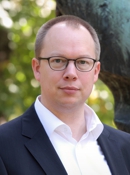Cyber Physical Modeling (CPM)
- Type: lecture
- Chair: IRS-RUS, IRS-VSA
- Semester: SS25
-
Time/Place:
VorlesungMittwoch, 11:30 - 13:00 MTI
Vorlesung Donnerstag, 11:30 - 13:00 LTI (14-täglich)
Übung Donnerstag, 11:30 - 13:00 LTI (14-täglich) - Start: Mittwoch, 23.04.2025
-
Lecturer:
Prof. Dr.-Ing. Sören Hohmann
Prof. Dr.-Ing. Mike Barth
M. Sc. Felix Thömmes
M. Sc. Leonie Schicketanz - SWS: 3
- Lv-No.: 2303310
Lecturers
 |
Prof. Dr.-Ing. Sören HohmannDozent |
 |
Prof. Dr.-Ing. Mike BarthDozent |
 |
M. Sc. Felix ThömmesBetreuung der Vorlesung |
 |
M. Sc. Leonie SchicketanzBetreuung der Vorlesung |
Overview
| Contact | If you have any questions concerning the lecture or the exercise, please contact Felix Thömmes or Leonie Schicketanz. |
| Recommendations |
Optimization of Dynamic Systems (ODS) |
| Teaching Content | This course aims at engineering students that focus on a system-based engineering curriculum, including architectures, modeling & simulation for Cyber Physical Systems. The module is designed to teach students the theoretical and practical aspects of Digital Twins and their interconnection with their physical counterpart. It encompasses fundamental topics along the complete process of modeling technical systems. For this purpose, it includes the conception and construction of digital twins including their model components. In terms of modeling and simulation of physical systems, two major areas will be covered: On the one hand, physical-based modeling techniques which derive formal model equations based on analyzing the physical firstprinciples of technical systems. This includes, inter alia, generalized equivalent circuits, bond graphs, port-Hamiltonian systems, variational analysis (Euler-Lagrange of the first kind). Selected topics of physical-based control methods will also be briefly introduced to integrate the complete physical control design in the wider control context and highlight its possible benefits. On the other hand, data-based identification techniques will be covered which are used to identify concrete model parameters for a given technical system from experimental data sets. When combining the identification with an initial, non-physical, structural set up of model equations, the complete process is often referred to as data-based modeling or black-box modeling. Both modeling areas base on available information about the physical system which is structured in Meta- and Information-Models. Examples that are covered in this lecture are Metamodels, e.g. AutomationML or the asset administration shell principles. Also, semantic web principles and ontologies will be part of the lecture content. |
| Literature |
P. E. Wellstead: Introduction to Physical System Modelling |
| Course Material | On Ilias all relevant course material (including lecture slides, exercise and tutorial sheets and semester schedule) can be downloaded |
| Workload |
1. Workload attendance in lectures an exercise: 3+1 SWS (60 h) 2. Pre-/Postprocessing of the lecture (90 h) 3. Preparation of and attendance in the exam: (30 h)
A total of 180 h = 6 CR |
| Goals |
|
| Exam |
exam SS25 on Thursday, 25th September 2025 from 11:00 - 12:30 Hörsaal am Fasanengarten |
| Evaluation | |

